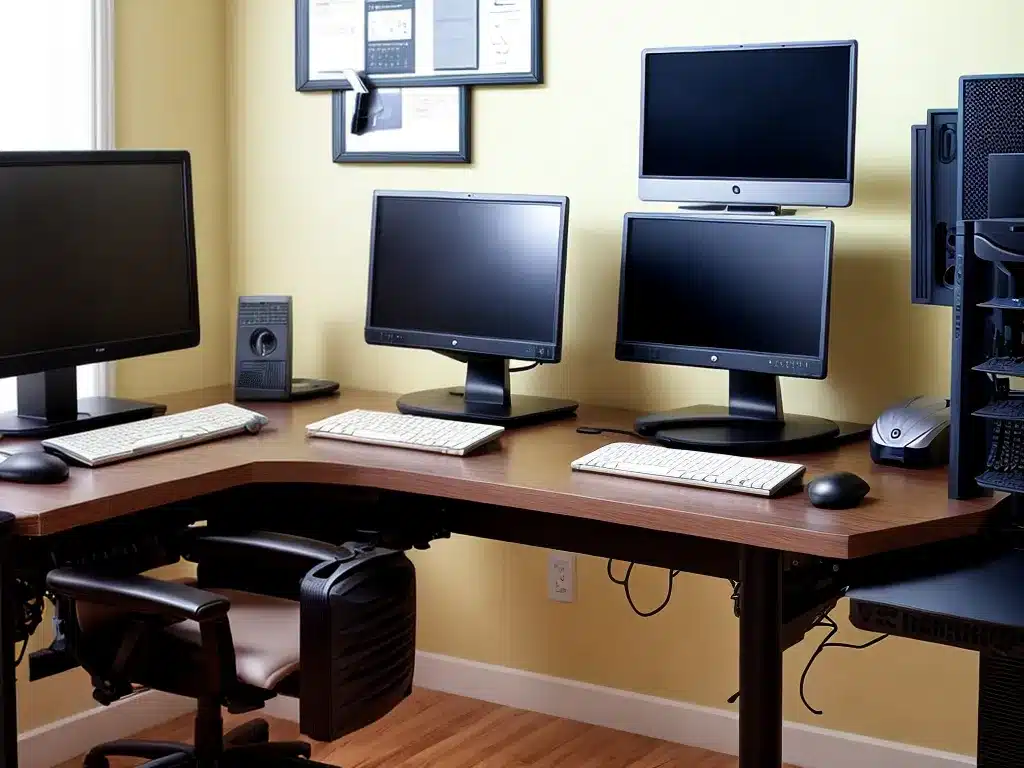
Proper ergonomic setup of your computer workstation is crucial for comfort, health, and productivity. Here are some top tips to optimize your workspace:
Proper Chair Height And Adjustments
The height of your chair is key for maintaining proper posture and reducing strain.
-
Your thighs should be parallel to the floor and your feet flat on the floor or footrest. Adjust the chair height to achieve this.
-
Adjust the backrest to support your lower back. Make sure there is a space between the back of your knees and the seat to avoid pinching.
-
Armrests should not restrict movement but allow your shoulders to relax. Adjust them to elbow height.
Optimal Monitor Positioning
Your monitor setup directly impacts neck and eye strain.
-
Position the monitor an arm’s length away at eye level to avoid neck pain from looking up/down.
-
Reduce glare with proper lighting and an anti-glare screen filter if needed.
-
For bifocal wearers, position the monitor slightly lower for comfortable viewing through lower lenses.
-
For multiple monitors, place the primary screen directly in front and secondary screens within peripheral vision to avoid excessive turning.
Proper Keyboard And Mouse Placement
Optimize keyboard and mouse placement to avoid hunching and reaching.
-
Position keyboard close enough to allow shoulders relaxed with elbows bent at 90 degrees. Wrists should be straight and neutral.
-
Place the mouse at the same level and close to the keyboard to prevent overreaching. Use a keyboard tray if needed.
-
Use a padded wrist rest to support and protect wrists during typing breaks. Avoid resting wrists on sharp edges.
-
Position keyboard and mouse cords out of the way to avoid entanglement and strain.
Organize The Work Surface
An organized work surface reduces clutter and allows proper placement of devices.
-
Remove any unnecessary items and organize essential papers/supplies for easy access.
-
Position your phone within reach. Use a headset to avoid cradling the phone between ear and shoulder.
-
Place a document holder adjacent to the monitor at the same viewing distance and height.
-
Have adequate lighting positioned to illuminate work materials without glare on screens.
Take Regular Breaks And Stretch
Prolonged sitting leads to strain and poor health. Take short breaks to move and stretch.
-
Every 20-30 minutes, stand up and take a short walk around the office. This gets blood flowing and relieves muscle fatigue.
-
Perform gentle neck, shoulder, and wrist stretches to relieve tension in these overused areas. Avoid eye strain by looking into the distance.
-
Set reminders to drink water and to maintain good posture. Hydration and posture awareness help combat fatigue.
Optimizing your computer workstation setup is essential for comfort and wellbeing. Following ergonomic guidelines for your chair, desk, monitor, peripherals, and work environment will allow you to work safely and productively.












